- Register
- Log in to Tune-In
- Wishlist (0)
-
Shopping cart
(0)
You have no items in your shopping cart.
Shipping
We ship to our fan's Worldwide
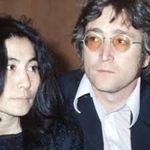
Yoko Ono has been reduced, in the eyes of many Beatles fans, to a punchline. She’s the “reason for the band’s breakup”—a wedge between the once iron-clad John Lennon-Paul McCartney partnership. That’s, of course, obscuring the group’s numerous other issues among themselves. She’s an easy scapegoat for one of the most disappointing band breakups of all time. Anyone who came between a pair of friends from the late ’60s on has been branded a “Yoko”.
Ono’s unpopularity with fans was likely always a source of struggle for the artist, but it only got worse after Lennon’s death in 1980. Ono reportedly faced unthinkable bullying from grieving Beatles fans, who seemingly forgot she felt all they were feeling, albeit with a personal angle.
There was one Lennon song that managed to comfort Ono in the wake of her husband’s death and public backlash, “Grow Old With Me.”
“Grow Old With Me”
We can’t think of a more heartbreaking choice of song for Ono to listen to in the aftermath of Lennon’s murder than “Grow Old With Me.” Grow old along with me / The best is yet to be / When our details

Paul McCartney has landed on top the Billboard Boxscore for November thanks to his Got Back tour.
The Beatles legend tops the chart after bringing in $51.7 million from sales of 150,000 tickets for 11 shows. The latest leg of the tour kicked off Sept. 29 in Palm Desert, California, and wrapped Nov. 25 in Chicago.
This is the second time McCartney’s Got Back tour earned him the #1 spot on the list. The tour previously topped the Billboard Boxscore in May of 2022.
McCartney’s Got Back tour, which initially launched in April of 2022 and has included shows in 2023, 2024 and 2025, has brought $410.7 million overall, with 2.4 million tickets sold.
In other news … The Beatles are helping fans get in the Christmas spirit with the YouTube release of The Beatles Holiday Yule Log (Merry Crimble) featuring classic Beatles tracks. The video features an image of roaring fire, with Christmas stockings hung on the mantel for McCartney, George Harrison, John Lennon and Ringo Starr. There’s also a turntable with pictures of the band members and presents wrapped in Beatles wrapping paper.
According to the description, “this video is made to be left on all holiday long, whether details
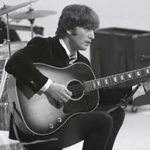
Lennon embedded subtle hints about leaving the Beatles in songs like “Glass Onion.”
He said, “I had to either be married to them [the band] or Yoko, and I chose Yoko.”
McCartney later stated Yoko was not to blame; the group was already breaking up.
Long before the Beatles’ official split in 1970, John Lennon was dropping subtle clues that he was ready to walk away.
In “Glass Onion” from the 1968 White Album, Lennon references a number of the Fab Four’s recent hits. The lyrics drop nods to Beatles classics like “Strawberry Fields Forever,” “Lady Madonna,” “Fool on the Hill” and “Fixing a Hole.”
Lennon also revisits the Magical Mystery Tour classic “I Am the Walrus,” with the line, “I told you about the walrus and me, man. You know that we’re as close as can be, man. Well, here’s another clue for you all. The walrus was Paul.”
In discussing the song, Lennon noted that he intentionally made the references confusing, challenging listeners to dig deeper for hidden meaning in the track.
“I threw the line in—’the Walrus was Paul’& details

The Beatles may have broken up in 1970, but the band continues to live on and 2025 was no exception. Fans of the band got a new look at their 1990s Anthology project with reissues of the documentary series, music and book.
-Disney+ debuted a restored and remastered version of the Anthology documentary series, which aired on ABC in 1995, with the eight-part series expanded to nine episodes. In addition, the music was reissued as The Anthology Collection, a box set featuring the first three Anthology albums, along with a new fourth edition, featuring 13 previously unreleased recordings. Anthology 4 was also released as a standalone.
-A 25th anniversary edition of The Beatles Anthology book, featuring more than 1,300 photos, documents, artwork and memorabilia, was also released.
-This year also brought casting news for Sam Mendes‘ four Beatles films, The Beatles – A Four-Film Cinematic Event, due out in April 2028. The project, in which each film will be told from the point of view of a different band member, will star Harris Dickinson as John Lennon, Paul Mescal as Paul McCartney, Barry Keoghan as Ringo Starr and Joseph Quinn as George Harrison.
Among this year’s other Beatles hig details

In the latest installment of his “You Gave Me the Answer” Q&A feature, Paul McCartney reflects on his eventful 2025 while also looking ahead to what he has in store for 2026.
As part of the feature, a fan named Sam asked the Beatles legend what he’s looking forward to the most in 2026.
“My new album!” McCartney declared. “We’re just starting to think about how to put that together.”
Sir Paul also revealed that he’s looking forward to the wide release of the Morgan Neville-directed documentary Man on the Run, “and all the activity that comes along with that.”
As previously reported, Man on the Run focuses on McCartney’s life and career following The Beatles’ breakup. The documentary focuses on Paul’s years with his post-Fab Four band Wings. Man on the Run will get its TV premiere on Amazon’s Prime Video streaming service on February 25, 2026.
The 83-year-old rock legend also said he’s excited about his long-in-the-works animated film High in the Clouds finally getting finished.
“High in the Clouds … is being made and we’ve finished up all the recordings of the voca details

Sgt. Pepper's Lonely Hearts Club Band' is considered The Beatles' masterpiece. "With A Little Help From My Friends" originally had a line Ringo refused to sing. Ringo objected to it, fearing real audience reactions.
The Beatles’ Sgt. Pepper’s Lonely Hearts Club Band is often regarded as the best album of all time. The album, released in May 1967, saw the band—John Lennon, Paul McCartney, George Harrison and Ringo Starr—take Beatlemania in a new direction, with a new influx of sonic styles and experimentation.
But it almost didn’t have one of its most important moments, all because of one line.
The line was in “With A Little Help From My Friends,” which Lennon and McCartney wrote together. “I remember giggling with John as we wrote the lines, ‘What do you see when you turn out the light? I can’t tell you but I know it’s mine,'” Mc details

Sean Ono Lennon opened up about why he's carrying on the legacy of his parents John Lennon, Yoko Ono and The Beatles
Sean said he is worried that people will forget his father and his music. Sean said he thinks he 'owes' it to his parents to do the work of protecting their legacy
Sean, 50, opened up about the legacy of dad John Lennon, mom Yoko Ono and The Beatles in a Dec. 21 interview with CBS Sunday Morning. With Yoko, 92, in her later years, Sean said he’s “technically” taken over her role as custodian of his dad’s legacy.
“But obviously the world is also the custodian of his legacy, I would say,” he added. “I'm just doing my best to help make sure that the younger generation doesn't forget about The Beatles and John and Yoko. That's how I look at it." The interviewer asked if he thought it was “even possible” that people could forget. “I do, actually," Sean admitted. "And I never did before."
The Beatles in 1967. From left: John Lennon, Ringo Starr, Paul McCartney and George Harrison.
John, alongside Paul McCartney, Ringo Starr and the late George Harrison found worldwide fame as The Beatles in the 196 details

John Lennon appeared "open" and "excited" during his final interview on the day of his tragic death.
The Beatles legend was shot and killed aged 40 outside the Dakota building in New York City on December 8, 1980, by Mark David Chapman. John sustained four gunshot wounds - two to the back and two to the shoulder - at point-blank range. He was declared dead upon arrival at the hospital.
Director Steven Soderbergh has shared insights about John's last day, which involved a recording session, a photo shoot and participating in a radio interview. The interview took place with RKO Radio and featured John alongside his wife Yoko Ono.
Steven is revisiting the radio conversation in a new documentary and disclosed that John and Yoko were "both so free in their discussions" while covering topics ranging from politics to music and their future plans. "I was surprised at how open and excited they were to talk," Steven confessed to Variety.
The 62-year-old filmmaker quipped that the candidness John and Yoko displayed made it seem as though they had never taken part in an interview previously. He continued, "Everything that they said 45 years ago is not just relevant today. It's even more relevant in ter details

Paul McCartney spoke about his early days with Wings on the Dec. 19 episode of NPR's Book of the Day podcast
The musician released his book Wings: The Story of a Band on the Run in November. The oral history, centered on McCartney's post-Beatles group, pulls from interviews with band members and others in their orbit
Paul McCartney is looking back on the beginnings of his post-Beatles career. The musician, 83, who published the oral history Wings: The Story of a Band on the Run this year, spoke about the beginnings of his post-Beatles band with A Martínez on the Dec. 19 episode of NPR’s Book of the Day podcast.
After the Beatles disbanded in 1970, McCartney recalled being in a “freer state of mind.” He noted how the dynamics within the group — which also included John Lennon, George Harrison and Ringo Starr — were “changing,” though the breakup still remained a “shock" to him at the time.
“I was trying to encourage us to go back and start from square one,” McCartney said on the podcast. “But in actual fact, I did that with Wings.”McCartney, his wife Linda and guitarist Denny Laine formed Wings in 1971. The ban details

It’s feeling very, very big picture at the moment with it all. When I really think about this weird cyclical nature, it feels like I landed on a body of work (in writing and directing Episode 9 of The Beatles Anthology) that I’m very proud of. And now I’m sort of resetting to decide where to go next….”
Even The Beatles can use as occasional tune-up: the long-anticipated documentary series The Beatles Anthology premiered on Disney Plus the week of November 26th, just in time for Thanksgiving. Episodes 1 through 8 saw footage added, and, with the help of director Peter Jackson, songs for the now four-CD set were cleaned so clearly, Beatles fans heard more than they ever had before. But the addition that fans waited for the most was the entirely new Episode 9.
The Beatles Anthology originally debuted in 1995 as a three-CD set, an eight-episode documentary series, and later, in 2000, a large coffee table book. The project took the Beatles world by storm. From never-before-seen clips of the lads in the early days as the Quarrymen to then-new footage of George Harrison, Paul McCartney, and Ringo Starr recording songs left unfinished by John Lennon, fans were allowed an inside peek of the details
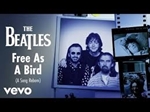
A short documentary titled A Song Reborn, about the making of The Beatles’ 1994 reunion tune “Free as a Bird,” has debuted on the band’s official YouTube channel. The five-minute film features previously unseen studio footage of Beatles members Paul McCartney, George Harrison, and Ringo Starr working on the track, as well as their commentary about the recording.
The footage was shot during the making of the 1990s docuseries The Beatles Anthology, a restored and expanded version of which recently premiered on Disney+.
“Free as a Bird” was built around a home demo of an unfinished song John Lennon recorded in 1977. Lennon’s widow, Yoko Ono, gave the cassette with the recording to John’s fellow Beatles, who then completed the track.
Early in the video, we hear Harrison discussing what led to the decision to record a new track using the Lennon demo.
“Different ideas have been talked about, that we can do the background music or even write a new song,” he noted. “We always had a thing between the four of us that if any one of us wasn’t in it, we weren’t gonna go out as The Beatles.”
McCartney then explained, &l details
When Jesus is speaking to the condemned in Matthew 25:43, saying things like, “I was a stranger, and you did not invite me in,” there wasn’t a caveat at the end of the verse that said, “But that’s okay, because I know you had a recording session booked that night.” Thus, when Paul McCartney opened his front door to see a man claiming to be the Messiah himself, he thought he’d better invite him in for a cup of tea. (And a few questions.)
The strange encounter took place in the late winter of 1967, when The Beatles were recording Sgt. Pepper’s Lonely Hearts Club Band. As McCartney recalled in Barry Miles’ Many Years From Now, he used to answer anyone who rang at his front gate. “If they were boring, I would say, ‘Sorry, no,’ and they generally went away. This guy said, ‘I’m Jesus Christ.’ I said, ‘Oop,’ slightly shocked. I said, ‘Well, you’d better come in then.’”
McCartney continued, “I thought, ‘Well, it probably isn’t. But if he is, I’m not going to be the one to turn him away. So, I gave him a cup of tea, and we just chatted.” The musician told his visitor details

The last two decades have produced some treats for Beatles fans, with various box sets and collectable merchandise hitting stores and websites. However, it would seem that the Fab Four have finally hit a miss with fans this year with the release of their Anthology 4 album.
To fill in those who may not know, The Beatles were a popular 60s British Band, made up of Paul McCartney, Ringo Starr, John Lennon, and George Harrison. They officially broke up in 1970, devastating fans. Fans begged for the members to reunite, until Lennon, one of the chief singer-songwriters of the group, was assassinated in 1980, destroying any hope of a future reunion.
Before his death, Lennon had recorded various song demos on tape. His widow, Yoko Ono, lent some of these demos for McCartney, Harrison, and Starr to tinker with. The surviving trio decided on three songs: “Free as a Bird,” “Real Love,” and “Now and Then.” Thanks to the work of Electric Light Orchestra front man, Jeff Lynne, the first two demos were cleaned up, overdubbed with vocals, drums, and guitar, and released with the albums The Beatles’ Anthology 1 (1995) and Anthology 2 (1996). “Now and Then,” howeve
details

The following ranking is not arguing that The Beatles are one of the scariest bands or anything, and more just that they were stylistically all over the place, and adventurous when it came to genres, so sometimes, their willingness to experiment and get weird led to them also getting scary. The following tracks are among the Fab Four’s creepiest, with the last one mentioned here being a genuine endurance test, and honestly nightmarish non-stop for more than eight minutes.
10 "Within You Without You" (1967)
The scariest song from Sgt. Pepper's Lonely Hearts Club Band will be mentioned in a bit, and maybe this spot should’ve gone to something like "Being for the Benefit of Mr. Kite!," which is lyrically more unsettling, but oh well. Here’s “Within You Without You.” Even for a track on a psychedelic album like Sgt. Pepper's Lonely Hearts Club Band, this is musically quite adventurous, and the philosophical lyrics here are mysterious and a bit unsettling.
9 "Maxwell's Silver Hammer" (1969)
If you ignore the lyrics, then “Maxwell’s Silver Hammer” is among the bounciest of all the Beatles songs, in step (for better or worse) with Paul McCartney’s sensibil details

Ringo Starr is cooperating with director Sam Mendes and his team on the upcoming four-part Beatles biopic, but a source exclusively tells Examiner that he’s being extremely uptight and micro-managerial about certain aspects of his life – especially regarding how much he partied back in the day.
“Some early concepts around what exactly the Ringo Starr-focused movie would cover leaned into Ringo’s hard partying during the height of the Beatles success,” the source says. “He loved being famous more than the other three guys – that’s a matter of historical record. Even with the casting of Barry Keoghan, you see a perfect fit with that kind of ‘wild man’ rock star portrayal.”
However, the source adds that with Starr’s “considerable input,” the ideas have evolved and filmmakers are trying to “unearth stories and moments from his years in the band that fans haven’t heard a million times before.”
“It’s all getting special attention from Sam and his team because they want all four films to be great and to be essential viewing for global audiences,” the source continues, “and Ringo has been details
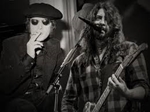
Bluesy hits and simple melodies characterized the Beatles’ early career. The end of their tenure was characterized by oddball, psychedelic, heavily conceptual tracks. Operating in a sort of middle ground is the Beatles‘ self-titled record, a.k.a The White Album. Released in 1968, this record saw the group turn their backs on heady material in favor of uninhibited rockers. Many fans consider this album their best work, including Dave Grohl. These opinions are echoed by John Lennon, who also thought this record was a timeless effort. Find out why both Grohl and Lennon loved The White Album below.
For a few of the albums that came before The White Album, the Beatles relied on heavy concepts. From loose themes to concept records, these albums saw the group leave their blues-inspired early years behind. As they worked on their self-titled, Lennon counted it as a return to form.
The late-great Beatle felt the album was hyper-focused on the band as meritable rock musicians. They didn’t need any overarching concept; their talent could stand on its own.
“What we’re trying to do is rock ‘n roll, ‘with less of your philosorock,’ is what we’re saying to ourselves details

The recordings are said to be from 1963, not long after The Beatles’ Jan. 1, 1962, audition for Decca Records.
Hang on to your Beatle wigs! Two “new” early Beatles recordings have surfaced, a solo acoustic demo of Paul McCartney’s self-penned “Love of the Loved,” and the first recording of Lennon-McCartney’s “Misery.”
Both turned up on YouTube on Dec. 10, 2025, apparently having been taken from one of the latest in a seemingly endless series of Beatles bootleg albums. Scroll down to the bottom of this article to hear the two newly discovered tracks.
“Love of the Loved” previously existed only on the legendarily shaky Beatles audition for Decca Records, which they famously failed, from Jan. 1, 1962. The newly surfaced demo was auctioned in 1991 by Christie’s, but has never appeared until now.
The version of “Misery,” purportedly from a Jan. 30-31, 1963, rehearsal at an empty Cavern Club (the Beatles’ early concert stronghold), was long reported to exist. A snippet of it was played by Beatles author Mark Lewisohn during his lecture tours, but this is the first appearance of the full song.
It’s ye details

Many Beatles fans through the years have made a hobby out of picking apart the Fab Four’s lyrics to find some hidden message or meanings. That was commonplace when the band was still together. In fact, John Lennon even wrote “I Am The Walrus” to mess with listeners who were assigning way too much meaning to their songs. Still, The Beatles recorded many songs with hidden meanings that flew over the heads of many listeners back in the day. Let’s look at a few Beatles tunes with fascinating, deeper meanings that you might have missed.
“Got To Get You Into My Life”
Fans go back and forth on how drug-influenced or drug-referential certain songs from The Beatles are. “Got To Get You Into My Life” is one song that has been confirmed by Paul McCartney to be about p*t.
“[We] were on tour, so we were all together in the hotel suite,” said McCartney of the inspiration for the song. “We were having a drink, and then Bob [Dylan] arrived and disappeared into a backroom. Then Ringo went back to see him and after a couple of minutes Ringo came back into the suite looking a little dazed and confused. And we said, ‘What’s up?’ and he said, details
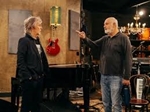
Paul McCartney mourned Rob Reiner and wife Michele’s deaths in an emotional Instagram post. McCartney praised Reiner’s work and recalled fond memories from filming 'Spinal Tap II.' 'Spinal Tap II' scene with McCartney was inspired by a real-life musical encounter.
Like many, Paul McCartney was shocked and saddened by the tragic news of the death of Rob Reiner and his wife, Michele.
McCartney shared his grief in an Instagram post on Dec. 15 with a photo of him and the famed director on the set of Spinal Tap II: The End Continues, which featured a cameo by the former Beatle.
“What a tragedy the death of Rob Reiner and his wife, Michele, is. It is so shocking in many ways but for me especially so, because over the last year I had been working with him. He directed me in ‘Spinal Tap II: The End Continues’. He was such an upbeat, lovable man,” McCartney wrote.
“Life can be so unfair and this tragedy proves it. His father, Carl Reiner, was a great humourist before him and Rob followed in his dad’s footsteps doing a terrific job making many great films. I will always have fond memories of Rob and the idea that he and his wife will no longer be in the details

Two legendary albums recorded in the same year using the same musicians, but released by completely different artists... Such an abundance of musical riches could have happened only in the early 1970s, before rock became corporate and was still in a state of communal bliss.
We are talking, of course, about George Harrison’s All Things Must Pass and Derek and the Dominos’ Layla & Other Assorted Love Songs. The two albums were created simultaneously, with the latter’s recording sessions taking place while Harrison was in the final stages of completing his first post-Beatles’ solo work.
It’s well known that Derek and the Dominos grew out of Harrison's backing band for All Things Must Pass. The Dominos — Eric Clapton, Bobby Whitlock, Carl Radle and Jim Gordon — were among the many musicians who played on Harrison’s triple-LP magnum opus. Having just completed work on Clapton’s self-titled solo album that March, they joined the former Beatle in May to begin work on what turned out to be a three-album set, comprising two albums of new songs and a bonus disc of studio jams, dubbed Apple Jam.
On August 23, as work continued on Harrison’s album, Clap details

There are so many films out there that are about or inspired by The Beatles. Not all of them are top-notch productions, but the following three are definitely worth a watch, in my opinion. Let’s take a look! If you’re a diehard Fab Four fan, you’ve probably seen at least a couple of these films.
‘Across The Universe’ (2007)
While some may not love it, I think Across The Universe is one of the finest films to utilize The Beatles’ music. They could have turned this into a cheesy reimagining of The Beatles’ lives as bandmates. But, instead, they looked into the lives of completely different people during the same era The Beatles were around, without including anything about The Beatles other than their music. It’s quite creative, undeniably psychedelic, and a poignant look at the real-life era of war and cultural tide-changing that occurred with the Fab Four as the musical backdrop.
‘Nowhere Boy’ (2009)
I rarely ever hear about this film nowadays, and that’s absolutely insane to me. Nowhere Boy is definitely one of the best films about The Beatles, specifically the early years of one of the band’s most iconic members, John Lennon. Eve details

At 92, Yoko Ono is finally finding an unlikely wave of support from Beatles fans who once blamed her for splitting up the band, with many now pointing to her lifelong pain over her abducted daughter as the reason they finally understand – and forgive – her.
OK! can reveal the renewed empathy follows the release of the HBO Max documentary One to One: John & Yoko, which revisits the 1971 abduction of Ono's daughter, Kyoko, now 61, by her former husband Anthony Cox and the decades-long search that consumed Ono and John Lennon over the "lost" girl.
The film, anchored around Lennon's 1972 benefit concert at Madison Square Garden, also reveals the emotional toll Kyoko's absence took on Ono's art, her public persona and – according to newly vocal Beatles fans – her treatment in pop history.
Much of the surge in sympathy stems from viewers who say the documentary reframes Ono's grief.
One longtime Beatles enthusiast said: "I think people underestimated just how much weight Yoko she was carrying. You can now see the pain of a mother who lost her child, and suddenly the jokes about her breaking up the band feel cruel. The revelations about Yoko's pain as a mom has changed the wa details

For as much as karma can work in mysterious ways, it can also be glaringly obvious, which seemed to be the case for Paul McCartney when he had to field “awful” jokes about his wife, Linda McCartney, joining Wings. The band was McCartney’s first ensemble endeavor post-Beatles, the latter of which was famously overshadowed by a passive-aggressive feud between Yoko Ono and every member of the Fab Four besides John Lennon.
The theory that McCartney was looking directly at Ono while he sang “Get Back” in the studio (specifically, “Get back to where you once belonged”) was a manifestation of this divide. Years later, McCartney discussed this contentious time in Beatles history during an appearance on The Howard Stern Show. “Those were very paranoid times, you know,” the ex-Beatle said.
“And let’s face it, we didn’t welcome Yoko in the studio. I thought it was a guy thing. Even the guys’ wives and the girlfriends and stuff weren’t really welcome in the studio. Control room for a quick visit. But actually sit in the studio with us? It was like, ‘Uh, no. Excuse me? We’re working.’”
Not long after the infamo details

Many Beatles fans through the years have made a hobby out of picking apart the Fab Four’s lyrics to find some hidden message or meanings. That was commonplace when the band was still together. In fact, John Lennon even wrote “I Am The Walrus” to mess with listeners who were assigning way too much meaning to their songs. Still, The Beatles recorded many songs with hidden meanings that flew over the heads of many listeners back in the day. Let’s look at a few Beatles tunes with fascinating, deeper meanings that you might have missed.
“Got To Get You Into My Life”
Fans go back and forth on how drug-influenced or drug-referential certain songs from The Beatles are. “Got To Get You Into My Life” is one song that has been confirmed by Paul McCartney to be about p*t.
“[We] were on tour, so we were all together in the hotel suite,” said McCartney of the inspiration for the song. “We were having a drink, and then Bob [Dylan] arrived and disappeared into a backroom. Then Ringo went back to see him and after a couple of minutes Ringo came back into the suite looking a little dazed and confused. And we said, ‘What’s up?’ and he said, details

Ringo Starr’s most notable endeavor post-Beatles is his creation and career with his band, Ringo Starr & His All-Star Band. Founded in 1989 and still going strong to this day, Ringo Starr & His All-Star Band always includes Ringo, of course, as well as some of the finest rock ‘n’ roll musicians of all time. Minus the core members, Gregg Bissonette, Steve Lukather, and Colin Hay, a few of the musicians who have been a part of the group include Joe Walsh, Billy Preston, Levon Helm, Jeff Lynne, Todd Rundgren, and many more. One musician who had an invitation to join the band but never did was Starr’s old pal and bandmate, George Harrison.
Following the breakup of The Beatles, George Harrison went on to have an incredibly successful solo career. Arguably, the best solo career of a Beatle. Prior to his passing, George Harrison scored three No. 1 hits, two No. 1 albums, and several Top 10 songs and albums. Needless to say, Harrison was a hot commodity, and that is seemingly why he never joined Ringo Starr & His All-Star Band.
George Harrison Jokingly Stated That He Was Too Expensive
Per the list we just gave you, Ringo Starr didn’t toss invitations out willy-nilly. He cho details
